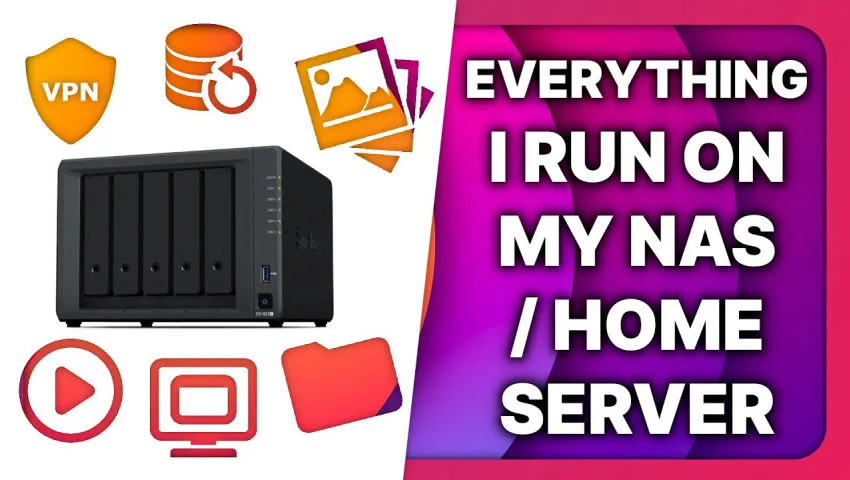Join the free webinar on Data Center Automation: https://tuxcare.com/webinars/modernizing-data-center-management/?utm_campaign=TuxCare_orcharhino_webinar&utm_source=youtube&utm_medium=paidsocial&utm_term=influencer
Grab a brand new laptop or desktop running Linux: https://www.tuxedocomputers.com/en#
👏 SUPPORT THE CHANNEL: Get access to a weekly podcast, vote on the next topics I cover, and get your name in the credits:
YouTube: https://www.youtube.com/@thelinuxexp/join Patreon: https://www.patreon.com/thelinuxexperiment Liberapay: https://liberapay.com/TheLinuxExperiment/
Or, you can donate whatever you want: https://paypal.me/thelinuxexp
👕 GET TLE MERCH Support the channel AND get cool new gear: https://the-linux-experiment.creator-spring.com/
🎙️ LINUX AND OPEN SOURCE NEWS PODCAST: Listen to the latest Linux and open source news, with more in depth coverage, and ad-free! https://podcast.thelinuxexp.com
🏆 FOLLOW ME ELSEWHERE: Website: https://thelinuxexp.com Mastodon: https://mastodon.social/web/@thelinuxEXP Pixelfed: https://pixelfed.social/TLENick PeerTube: https://tilvids.com/c/thelinuxexperiment_channel/videos Discord: https://discord.gg/mdnHftjkja
#homelab #nas #linux
00:00 Intro 00:28 Sponsor: Join a free webinar on data center automation 01:20 My NAS 02:34 Virtual machines 04:02 Plex 05:11 VPN 06:34 Cloud Photo Storage 07:56 Drive & backups 09:10 Shared Storage 10:12 What I want to setup 12:41 Settings 14:02 Sponsor: Get a PC made to run Linux 15:01 Support the channel
The first thing I recently started doing on the NAS is virtual machines. I installed Virtual Machine manager, and it’s pretty easy to use, you just create a VM, you select how many CPU cores and how much RAM you want, you create a virtual disk, and you select an ISO from the NAS storage, and you’re good to go.
Another thing I run is Plex. It’s a media server. I store movies and TV Shows in there, and I play these from my TV, with the Plex app. Plex was available as a one click install from the package center of Synology DiskStation manager.
I also use my NAS to run my own VPN. Of course, you do lose the access to a foreign IP, and some privacy, since, well the VPN gets your home Ip address, so the same that your computer might have had.
I use the VPN server app from the NAS’s package manager, and I used OpenVPN. Setting things up was super easy, I just had to export the config file, and import it in GNOME’s settings, after modifying the file to add the domain name that my NAS uses as the IP, and I also had to open the relevant port in my router’s config, of course.
Another thing I use my NAS for is to stop paying for cloud photo and video storage. I use SYnology Photos here. It’s a nice little app that you can run on your NAS and on your mobile devices. What it does is basically the same thing as Apple Photos, or GOogle Drive: you open the app, it backs everything up to your NAS, and you can access them from any web browser, manage albums
Now, for the most original use of a NAS: file storage and backups. To do that, I use the SYnology Drive client, which is available on Linux.
I use this app to create a backup of my /home directory, to my NAS storage. I also created a sync task to sync the photos that came from my phone, to my NAS, to my computer.
I also use my NAS as a file exchange thingy. When I record something on a test laptop for a video, I store all the recordings on the NAS, and I download them back from the computer I’ll do the editing on.
All the storage is also accessible through Samba, so I can connect to it easily from my local network.
Now there are a few things I would like to try and setup here as well. The first one is Nextcloud. I’m planning to use the Container Manager app to use Docker and install Nextcloud with that, on the NAS.
Another thing I’d like to do is automating a download of the latest videos from my youtube subscription feed, and to create an RSS feed for that so I can use any podcast client or app to watch just these videos.
Another thing I’d like to try is to setup Kasm Workspaces: it’s a self hostable solution to run desktops, operating systems, or apps remotely, and stream them to a web browser.
I’m pretty sure I can install that using Docker on the NAS, and replace the Virtual Machines manager that Synology offers with something open source. It probably won’t change my workflow all that much, but open source solutions are just more my jam, and it’s a fun project to try and tackle.



This is a test comment please ignore